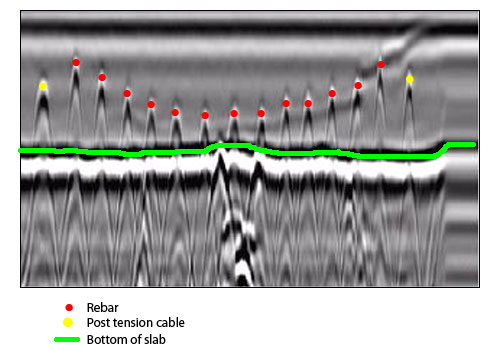Concrete Scanning: A Vital Action In The Direction Of Making Sure Architectural Honesty and Safety And Security
In the world of building and construction and framework upkeep, the relevance of concrete scanning can not be overemphasized. This precise process holds the essential to unveiling potential hazards concealed under the surface area of apparently strong frameworks. By utilizing advanced technology and methodologies, concrete scanning functions as a crucial device in making sure that the honesty and safety of structures and bridges are maintained to the highest possible criteria. Nevertheless, beyond its surface-level effects, the duty of concrete scanning prolongs far much deeper than meets the eye.
Significance of Concrete Scanning
Concrete scanning plays a crucial duty in guaranteeing the structural integrity and safety and security of buildings and facilities projects. By using innovative technologies such as ground-penetrating radar (GPR) and electro-magnetic induction, specialists can non-destructively examine concrete frameworks to detect prospective issues, spaces, ingrained things, and reinforcement design. This procedure enables early discovery of abnormalities that might endanger the security of a structure, avoiding expensive problems and ensuring the security of passengers.
Concrete scanning is particularly necessary throughout the planning and construction phases of a task. Prior to exploration, cutting, or coring into concrete, scanning assists recognize the precise locations of rebar, post-tension cable televisions, and various other ingrained components, decreasing the threat of accidental hits that might bring about structural weaknesses. Furthermore, concrete scanning aids in quality assurance by confirming the thickness of concrete covers and finding any kind of disparities that might influence the total durability of the framework. Inevitably, purchasing concrete scanning solutions is not just a positive procedure to alleviate dangers however likewise a fundamental step towards maintaining the long-term security and stability of buildings and infrastructure.
Technology for Concrete Examination

Advantages of Early Detection
Timely discovery of architectural concerns can dramatically reduce dangers and guarantee the durability of building and construction jobs. By recognizing possible problems early on in the building process, stakeholders can take proactive actions to deal with problems prior to they intensify right into larger and a lot more pricey problems. Among the key benefits of early discovery is the avoidance of architectural failures, which can position significant safety hazards and lead to project hold-ups and monetary losses.
In addition, very early discovery permits prompt fixings and maintenance, which can help expand the life-span of the framework. By attending to concerns promptly, building and construction groups can prevent expensive repair services and even the requirement for premature replacement of architectural components. This positive method not only conserves time and cash yet additionally boosts the general safety and toughness of the building job.
Additionally, very early detection can improve job preparation and decision-making by offering stakeholders with valuable understandings into the condition of the structure. Equipped with this info, project supervisors can make informed choices concerning building and construction materials, timelines, and approaches, resulting in extra reliable and effective task results.
Ensuring Architectural Security
Ensuring the architectural security of a building project is critical to its security and durability. Architectural security refers to the capability of a structure or infrastructure to preserve its form and function under ecological problems and various tons. To attain this, extensive analysis and surveillance of the structure are crucial. Concrete scanning plays a vital duty in ensuring structural stability by identifying potential issues such as spaces, delamination, or reinforcement deterioration that might endanger the honesty of the framework with time.
By using sophisticated scanning innovations like ground-penetrating radar (GPR) and electro-magnetic induction, building experts can non-invasively check concrete structures to recognize areas of concern beneath the surface area. This aggressive method enables the very early detection of weak points or problems, allowing prompt repairs or support to protect against architectural failings.
Routine concrete scanning throughout various construction phases and throughout the life process of a structure can help keep its security, minimize threats, and make sure the security of residents. By prioritizing structural security with concrete scanning, building projects can enhance their durability and check here sturdiness, ultimately adding to higher safety and longevity.

Avoiding Crucial Failings
To secure versus catastrophic occasions, thorough tracking and proactive upkeep are critical in preventing crucial failings within structural structures. Detecting prospective issues before they rise is essential to stopping structural failings. Implementing routine examinations, such as concrete scanning, can disclose covert issues like spaces, splits, or corrosion that might compromise the stability of a framework. By utilizing innovative scanning technologies like Ground Penetrating Radar (GPR) or Concrete X-ray, engineers can non-destructively analyze the condition of concrete and determine powerlessness that call for reinforcement or repair service - RainierGPR Service Areas.

Conclusion
In conclusion, concrete scanning plays an essential role in guaranteeing structural stability and security by making use of innovative modern technology for early more information discovery of potential concerns. This aggressive approach helps prevent essential failings and guarantees the security of frameworks. It is necessary to focus on concrete assessment as a standard practice to shield the long life and safety and security of structures and framework.
Concrete scanning plays a critical duty in making certain the architectural stability and safety and security of structures and facilities jobs. Additionally, concrete scanning help in quality control by validating the thickness of concrete covers and finding any type of discrepancies that might influence the general resilience of the structure. Concrete scanning plays a critical function in guaranteeing structural security by discovering possible concerns such as voids, delamination, or support corrosion that can jeopardize the integrity of the framework over time.

In go now verdict, concrete scanning plays a critical role in guaranteeing structural stability and security by using sophisticated innovation for early detection of potential problems.